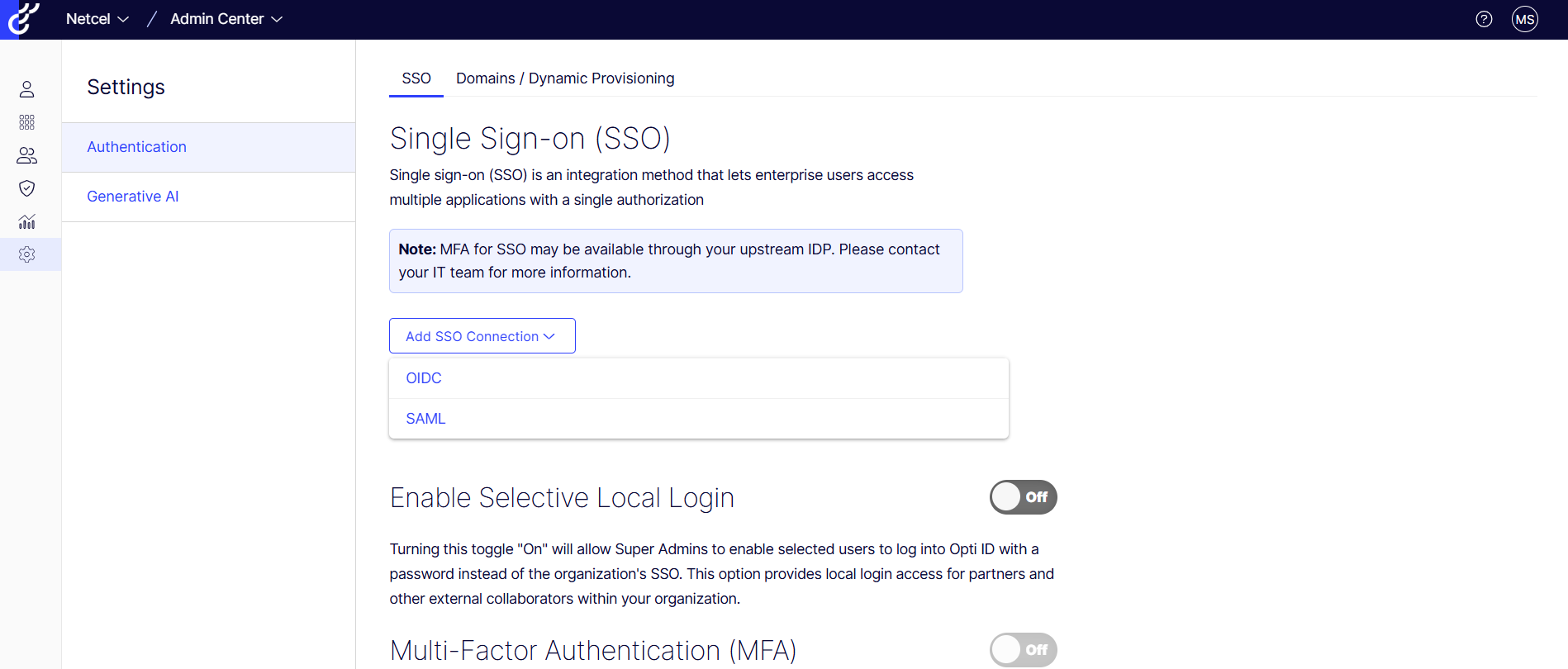Step 4 of 36 (11% complete)
Single Sign-On (SSO)
Single Sign-On (SSO) with Opti ID
Optimizely Identity supports enterprise-grade Single Sign-On (SSO), making it easy to connect your existing Identity Provider (IDP) to Optimizely One.
Whether your organisation uses Azure AD, Okta, or another provider, you can configure SSO using either OIDC (OpenID Connect) or SAML 2.0, directly within the Opti ID settings.

During setup, you simply choose the protocol that matches your IDP from a dropdown menu, then input the required configuration details — such as client ID, issuer URL, or certificate information.
Once SSO is enabled, your users can sign in securely using their existing corporate credentials. This ensures a consistent login experience across all Optimizely products, while giving IT full control over authentication and user lifecycle management.
This is ideal for organisations looking to scale access securely, reduce friction for users, and meet internal compliance standards.
Dynamic Provisioning
Optimizely Identity also supports dynamic provisioning of users and groups from your IDP. This means that when a user is added or removed in your IDP, their access to Optimizely products is automatically updated without manual intervention.
This feature helps maintain security and compliance by ensuring that only authorised users have access to sensitive data and tools, while also simplifying administration for IT teams.
Benefits of SSO with Optimizely Identity
- Centralised Access Management: Control user access across all Optimizely products from one place.
- Improved Security: Leverage your existing IDP's security features, such as MFA (Multi-Factor Authentication).
- Enhanced User Experience: Users log in once to access all tools, reducing password fatigue and support requests.
- Scalability: Easily onboard new users or teams without complex setup processes.
- Compliance: Maintain audit trails and meet regulatory requirements with centralised identity management.
Have questions? I'm here to help!
